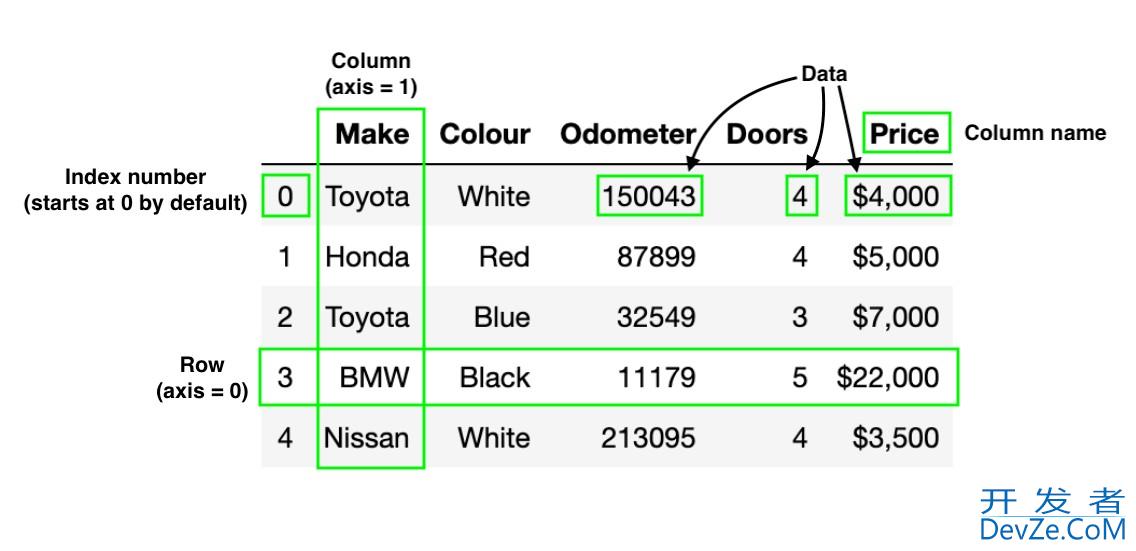使用Python爬取网页中隐藏的div内容
目录
- 引言
- 为什么需要爬取隐藏的div内容?
- 环境准备
- 基本方法:静态html解析
- 使用Requests和BeautifulSoup
- 高级方法:动态内容抓取
- 使用Selenium
- 安装Selenium
- 示例代码
- 关键点解释
- 处理复杂情况
- 模拟用户操作
- 关键点nHTVS解释
- 性能优化
- 使用Headless模式
- 并发抓取
- 关键点解释
- 数据清洗和存储
- 数据清洗
- 数据存储
- 结语
引言
在这个信息爆炸的时代,互联网上的数据无时无刻不在增长。作为数据科学家或开发者,我们经常需要从网页中提取有价值的信息。然而,许多网页为了提升用户体验或保护数据,会将部分内容默认隐藏起来,只有在特定条件下才会显示。这些隐藏的内容通常包含在HTML中的<div>标签内,并通过JavaScript动态加载。本文将详细介绍如何使用python爬取这些隐藏的div内容,帮助你在数据采集过程中更加得心应手。
为什么需要爬取隐藏的div内容?
在实际应用中,隐藏的div内容可能包含关键信息,例如评论、用户评分、产品详情等。这些信息对于数据分析、市场研究、竞品分析等场景至关重要。例如,如果你是一名《CDA数据分析师》,在进行市场调研时,可能会遇到需要抓取用户评论的情况,而这些评论往往是在页面加载后通过javascript动态加载http://www.devze.com的。
环境准备
在开始之前,我们需要准备一些基本的工具和库。以下是推荐的环境配置:
- Python:建议使用Python 3.6及以上版本。
- Requests:用于发送HTTP请求。
- BeautifulSoup:用于解析HTML文档。
- Selenium:用于模拟浏览器行为,处理JavaScript动态加载的内容。
- ChromeDriver:Selenium的WebDriver,用于控制Chrome浏览器。
你可以使用以下命令安装所需的库:
pip install requests beautifulsoup4 selenium
同时,确保你已经下载了与你的Chrome浏览器版本匹配的ChromeDriver,并将其路径添加到系统的环境变量中。
基本方法:静态HTML解析
使用Requests和BeautifulSoup
首先,我们尝试使用Requests和BeautifulSoup来解析静态HTML内容。这种方法适用于那些不需要JavaScript加载的内容。
import requests
from bs4 import BeautifulSoup
url = 'https://example.com'
response = requests.get(url)
soup = BeautifulSoup(response.content, 'html.parser')
# 查找所有的div元素
divs = soup.find_all('div')
for div in divs:
print(div.text)
然而,对于隐藏的div内容,这种方法通常无效,因为这些内容在初始HTML中并不存在。
高级方法:动态内容抓取
使用Selenium
Selenium是一个强大的工具,可以模拟浏览器行为,处理JavaScript动态加载的内容。下面我们通过一个具体的例子来说明如何使用Selenium抓取隐藏的div内编程客栈容。
安装Selenium
确保你已经安装了Selenium和ChromeDriver:
pip install selenium
示例代码
假设我们要抓取一个网页中通过JavaScript动态加载的评论内容。我们可以使用Selenium来实现这一点。
from selenium import webdriver
from selenium.webdriver.common.by import By
from selenium.webdriver.support.ui import WebDriverWait
from selenium.webdriver.support import expected_conditions as EC
# 初始化WebDriver
driver = webdriver.Chrome()
# 打开目标网页
url = 'https://example.com'
driver.get(url)
# 等待页面加载完成
try:
# 等待特定的元素出现
element = WebDriverWait(driver, 10).until(
EC.presence_of_element_located((By.ID, 'comments'))
)
finally:
# 获取页面源代码
page_source = driver.page_source
driver.quit()
# 解析页面源代码
soup = BeautifulSoup(page_source, 'html.parser')
# 查找所有的评论div
comment_divs = soup.find_all('div', class_='comment')
for comment in comment_divs:
print(comment.text)
关键点解释
- 初始化WebDriver:我们使用
webdriver.Chrome()初始化一个Chrome浏览器实例。 - 打开目标网页:使用
driver.get(url)方法打开目标网页。 - 等待页面加载完成:使用
WebDriverWait和expected_conditions来等待特定的元素出现。这一步非常重要,因为它确保了页面已经完全加载完毕。 - 获取页面源代码:使用
driver.page_source获取当前页面的HTML源代码。 - 解析页面源代码:使用BeautifulSoup解析HTML源代码,查找并提取所需的div内容。
处理复杂情况
在实际应用中,网页的结构可能会更加复杂,例如某些内容需要用户交互(如点击按钮)才能显示。这时,我们可以通过Selenium模拟用户操作来触发这些事件。
模拟用户操作
假设我们需要点击一个按钮来显示隐藏的评论内容,可以使用以下代码:
from selenium import webdriver
from selenium.webdriver.common.by import By
from selenium.webdriver.support.ui import WebDriverWait
fro编程客栈m selenium.webdriver.support import expected_conditions as EC
# 初始化WebDriver
driver = webdriver.Chrome()
# 打开目标网页
url = 'https://example.com'
driver.get(url)
# 等待按钮出现
button = WebDriverWait(driver, 10).until(
EC.element_to_be_clickable((By.ID, 'show-comments-button'))
)
# 点击按钮
button.click()
# 等待评论内容出现
try:
# 等待特定的元素出现
element = WebDriverWait(driver, 10).until(
EC.presence_of_element_located((By.ID, 'comments'))
)
finally:
# 获取页面源代码
page_source = driver.page_source
driver.quit()
# 解析页面源代码
soup = BeautifulSoup(page_source, 'html.parser')
# 查找所有的评论div
comment_divs = soup.find_all('div', class_='comment')
for comment in comment_divs:
print(comment.text)
关键点解释
- 等待按钮出现:使用
WebDriverWait和element_to_be_clickable来等待按钮出现并变得可点击。 - 点击按钮:使用
button.click()方法模拟用户点击按钮。 - 等待评论内容出现:再次使用
WebDriverWait和presence_of_element_located来等待评论内容出现。
性能优化
在处理大规模数据抓取任务时,性能优化是非常重要的。以下是一些常用的优化技巧:
使用Headless模式
Selenium支持无头模式(Headless mode),即在后台运行浏览器,不显示图形界面。这可以显著提高抓取速度和减少资源消耗。
from selenium import webdriver
from selenium.webdriver.chrome.options import Options
# 设置Chrome选项
chrome_options = Options()
chrome_options.add_argument('--headless')
chrome_options.add_argument('--disable-gpu')
# 初始化WebDriver
driver = webdriver.Chrome(options=chrome_options)
# 打开目标网页
url = 'https://example.com'
driver.get(url)
# ... 其他代码 ...
并发抓取
使用多线程或多进程可以显著提高抓取效率。Python的concurrent.futures模块提供了方便的并发编程接口。
import concurrent.futures
from selenium import webdriver
from selenium.webdriver.chrome.options import Options
from bs4 import BeautifulSoup
def fetch_comments(url):
chrome_options = Options()
chrome_options.add_argument('--headless')
chrome_options.add_argument('--disable-gpu')
driver = webdriver.Chrome(options=chrome_options)
driver.get(url)
page_source = driver.page_source
driver.quit()
soup = BeautifulSoup(page_source, 'html.parser')
comment_divs = soup.find_all('div', class_='comment')
return [comment.text for comment in comment_divs]
urls = ['https://example.com/page1', 'https://example.com/page2', 'https://example.com/page3']
with concurrent.futures.ThreadPoolExecutor() as executor:
results = list(executor.map(fetch_comments, urls))
for result in results:
for comment in result:
print(comment)
关键点解释
- 设置Chrome选项:启用无头模式和禁用GPU加速。
- 定义抓取函数:
fetch_comments函数负责打开网页、获取页面源代码、解析并返回评论内容。 - 使用ThreadPoolExecutor:使用
concurrent.futures.ThreadPoolExecutor并行执行php多个抓取任务。
数据清洗和存储
抓取到的数据往往需要进一步清洗和存储。Python提供了多种工具和库来帮助你完成这些任务。
数据清洗
使用Pandas库进行数据清洗非常方便。例如,假设我们抓取到了一组评论数据,可以使用以下代码进行清洗:
import pandas as pd
# 假设我们已经抓取到了评论数据
comments = [
{'text': 'Great product!', 'date': '2023-01-01'},
{'text': 'Not so good.', 'date': '2023-01-02'},
{'text': 'Excellent service!', 'date': '2023-01-03'}
]
# 将数据转换为DataFrame
df = pd.DataFrame(comments)
# 清洗数据
df['date'] = pd.to_datetime(df['date'])
df['text'] = df['text'].str.strip()
print(df)
数据存储
将清洗后的数据存储到文件或数据库中。例如,可以将数据保存为CSV文件:
df.to_csv('comments.csv', index=False)
或者将数据存储到SQLite数据库中:
import sqlite3
conn = sqlite3.connect('comments.db')
df.to_sql('comments', conn, if_exists='replace', index=False)
conn.close()
结语
通过本文的介绍,相信你已经掌握了如何使用Python爬取网页中隐藏的div内容的方法。无论是静态HTML解析还是动态内容抓取,都有相应的工具和技巧可以帮助你高效地完成任务。
以上就是使用Python爬取网页中隐藏的div内容的详细内容,更多关于Python爬取隐藏div内容的资料请关注编程客栈(www.devze.com)其它相关文章!






 加载中,请稍侯......
加载中,请稍侯......
精彩评论